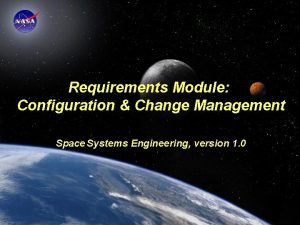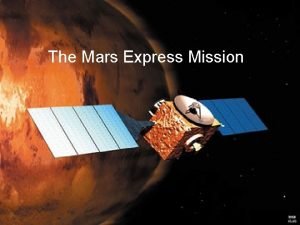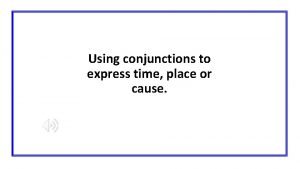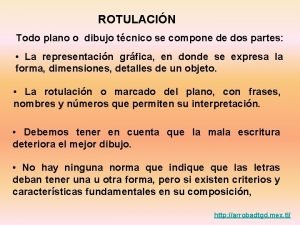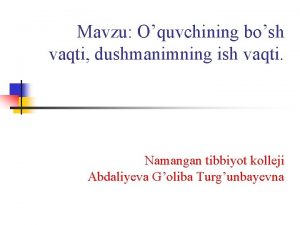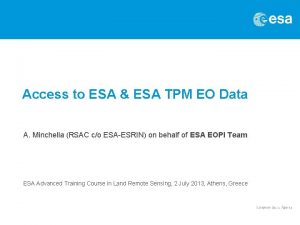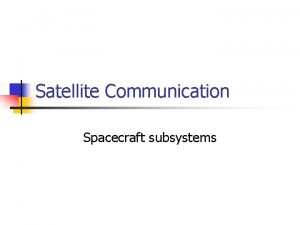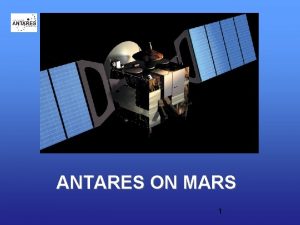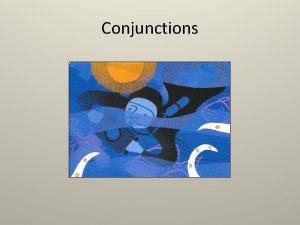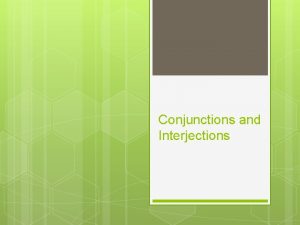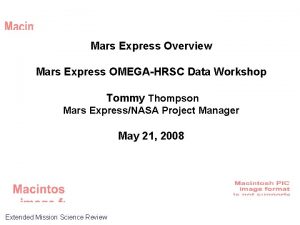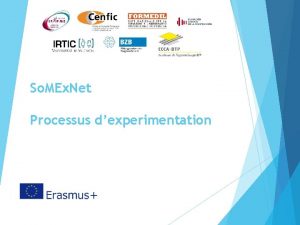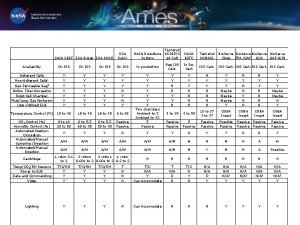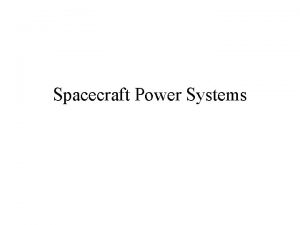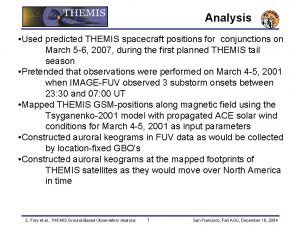Solar Conjunctions ESA Spacecraft Mars Express MEX 5























- Slides: 23



Solar Conjunctions: ESA Spacecraft Mars Express (MEX) 5 conjunctions Current State Conjunction № 1 18 Aug 2004 – 22 Oct 2004 Conjunction № 2 08 Oct 2006 – 22 Nov 2006 Conjunction № 3 01 Nov 2008 – 15 Jan 2009 Conjunction № 4 26 Dec 2010 – 27 Mar 2011 Результаты представлены на этой конференции Conjunction № 5 04 Mar 2013 – 10 Apr 2013 Обработка Conjunction № 6 May 2015 Возможны эксперименты Rosetta (ROS) Результаты публиковались в течение 2010 -2014 2 conjunctions Conjunction № 1 15 Mar 2006 – 04 May 2006 Результаты опубликованы в 2010 Conjunction № 3 03 Oct 2010 – 31 Oct 2010 Результаты представлены на этой конференции Conjunction № 4 February 2015 Возможны эксперименты Venus Express (VEX) Conjunction № 1 1 conjunction 08 Oct 2006 – 05 Dec 2006 Результаты представлены на конференции 2013 3

ROSETTA 2010: Conjunction Geometry MARS EXPRESS 2011: Conjunction Geometry View from Earth: Ecliptic Coordinates 4


Radio-Sounding Observations 2010 -2011 • Frequencies: S-band (2. 3 GHz), X-band (8. 4 GHz) • Tracking stations: DSN: Madrid (DSS 63), Goldstone (DSS 14) ESTRACK: New Norcia (DSS 32) • Low solar activity • Frequency fluctuations: temporal spectra (power law index F), RMS radial profile: F = Bi(R / RS)-b • Range delay measurements temporal spectra quasi-periodic fluctuations 6

Results of theoretic analysis In fact thanks to the transformation of the X-band signal into S-band signal with the use the spacecraft transponder with low coefficient this scheme provides one-way sounding of the solar corona by the S-band signals with a frequency stability of the hydrogen standard 7


Радиальные зависимости σf и спектрального индекса αf ROSETTA 2010 σ fi = DOY 284 DOY 297 -β B fi (R/R S ) fi i = s, x, d ROSETTA Ingress + Egress s: βfs = -1. 828 Bfs = 17. 119 x: βfx = -1. 764 Bfx = 6. 473 d: βfd = -1. 808 Bfd = 15. 222 Kolmogorov v a l u e: 2 / 3 MARS EXPRESS Ingress s: βfs = -1. 986 Bfs = 29. 315 x: βfx = -1. 957 Bfx = 14. 430 d: βfd = -2. 083 Bfd = 36. 809 Egress s: βfs = -1. 607 Bfs = 7. 895 x: βfx = -1. 612 Bfx = 3. 732 d: βfd = -1. 642 Bfd = 8. 084 9









Enhanced frequency fluctuations at coronal sounding during solar conjunctions of ROS in 2010 and MEX in 2010/2011 № R/RS Limb (tmax n-tmax 1) σFmax / calc. days σFnom Year DOY Date 1 ROS 2010 284 11 Oct 10: 22: 20 13. 53 East 0 0 4. 61 2 ROS 2010 297 04 Oct 13: 00: 40 21. 88 West 13. 11 (~0. 5 Tsin) 13. 13 2. 86 3 MEX 2010 365 31 Dec 06: 56: 23 30. 78 East 80. 86 (~3 Tsin) 80. 54 11. 32 4 MEX 2011 028 28 Jan 14: 52: 18 07. 15 East 109. 18 (~4 Tsin) 108. 32 3. 65 5 MEX 2011 041 10 Feb 18: 06: 27 06. 41 West 122. 36 (~4. 5 Tsin) 121. 82 4. 32 6 MEX 2011 068 09 Mar 05: 49: 04 26. 40 West 148. 81 (~5. 5 Tsin) 148. 5 11. 03 event UTmax (tmax n-tmax 1) meas. days S/C It is follows from Table that the enhanced frequency fluctuations were observed at time shifts relatively to the first conjunction (DOY 284, east side) proportional to n×T or to m× 0. 5 T , where T is sinodic period of the Sun rotation (T=27 days) in this case the enhancement of the frequency fluctuations is connected with the same region of the Sun surface 18





 Spacecraft requirements management
Spacecraft requirements management Esa multimedia.esa.int./multimedia/virtual-tour-iss
Esa multimedia.esa.int./multimedia/virtual-tour-iss Optblue rates
Optblue rates Mars express mission
Mars express mission Conjunctions of time place and cause
Conjunctions of time place and cause Taco rico
Taco rico Windbg api
Windbg api Arrobadtgd.mex
Arrobadtgd.mex X mex
X mex Wholesale solar
Wholesale solar Inexhaustible source of energy
Inexhaustible source of energy Sonrie pero no te escondas detras de esa sonrisa
Sonrie pero no te escondas detras de esa sonrisa European space agency jobs
European space agency jobs Pool bonding diagram
Pool bonding diagram Cara de felicidades
Cara de felicidades 8004147427
8004147427 Esa boca de mario benedetti pdf
Esa boca de mario benedetti pdf No pongas esa cara
No pongas esa cara Kesehatan masyarakat esa unggul
Kesehatan masyarakat esa unggul Esa sundbäck
Esa sundbäck Esa lain
Esa lain Talimni tarbiyadan tarbiyani esa
Talimni tarbiyadan tarbiyani esa Esa tpm
Esa tpm Esa member states
Esa member states
